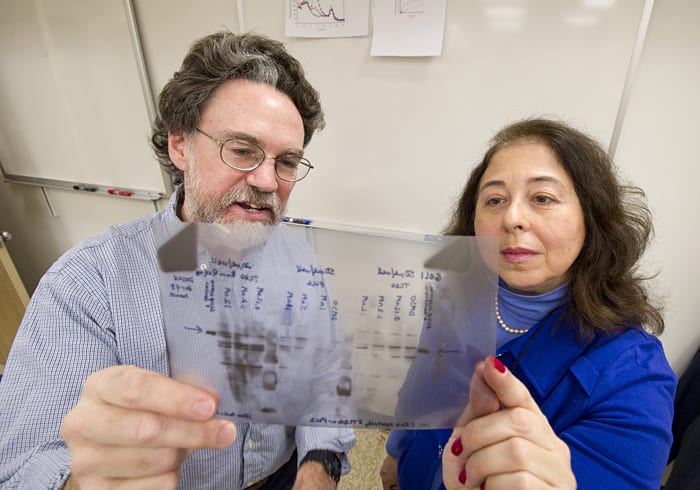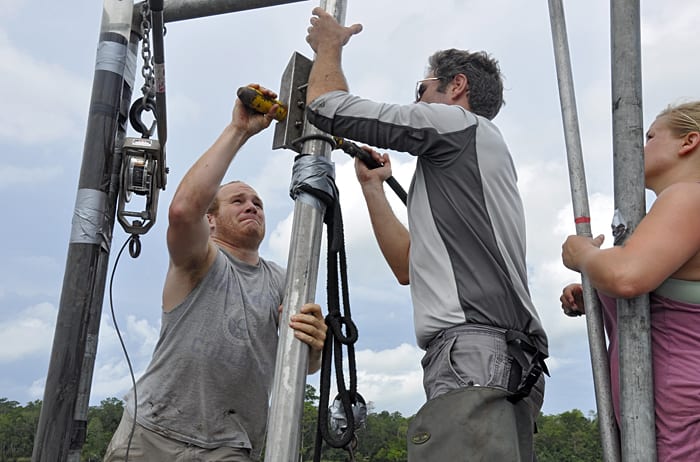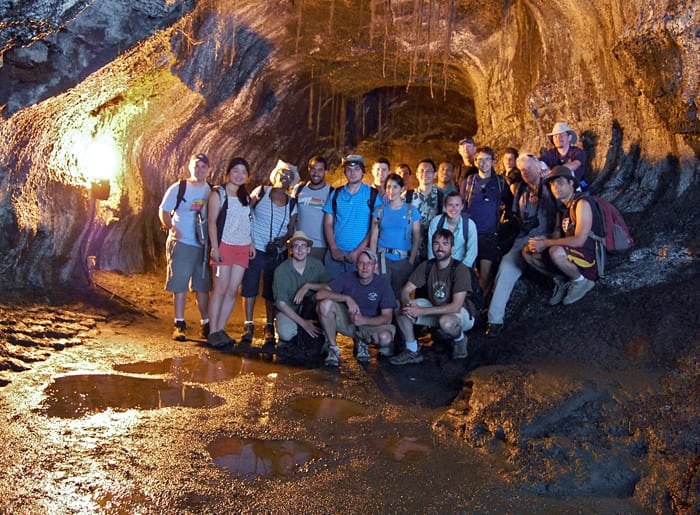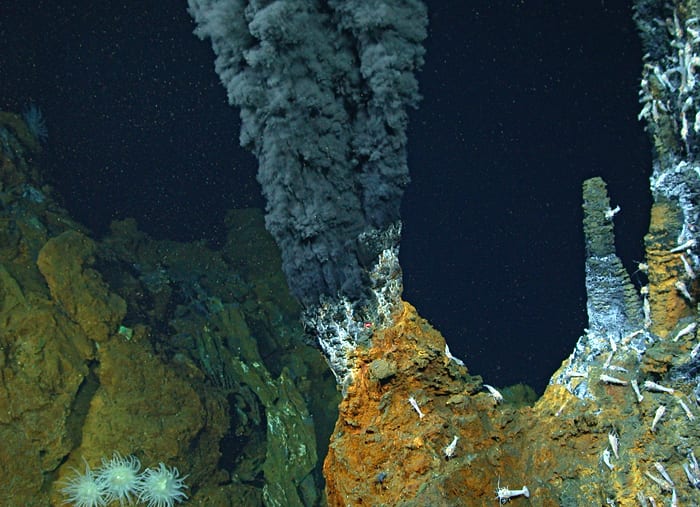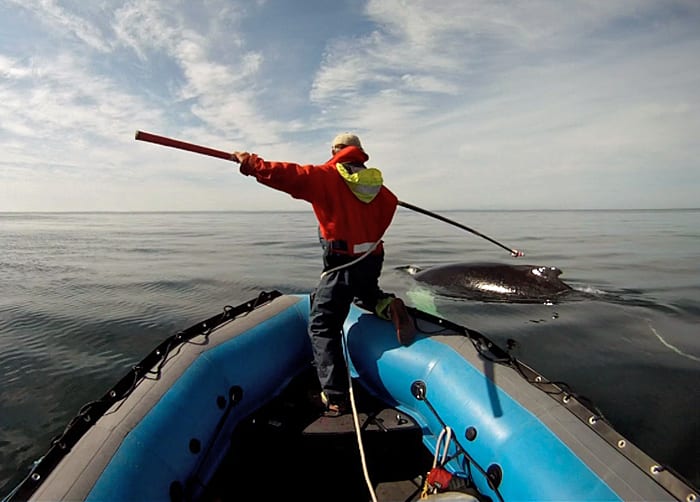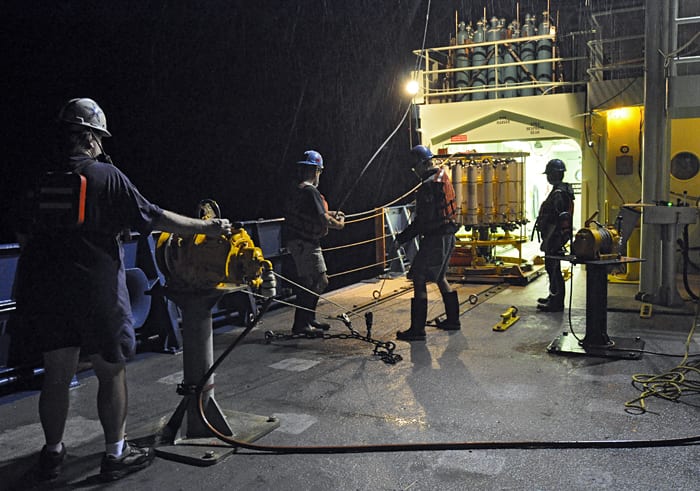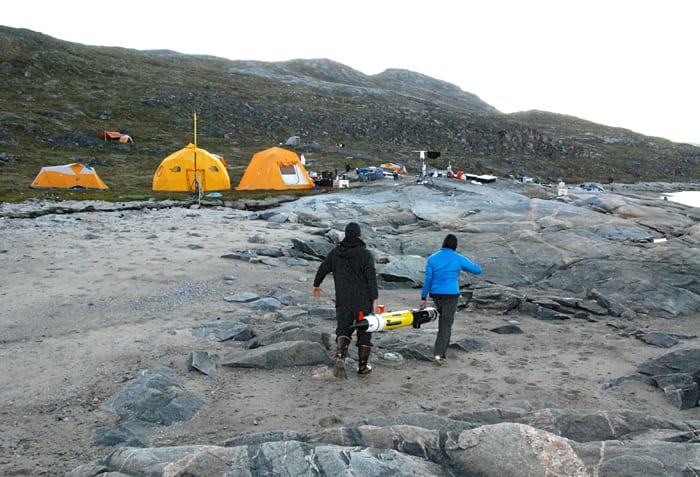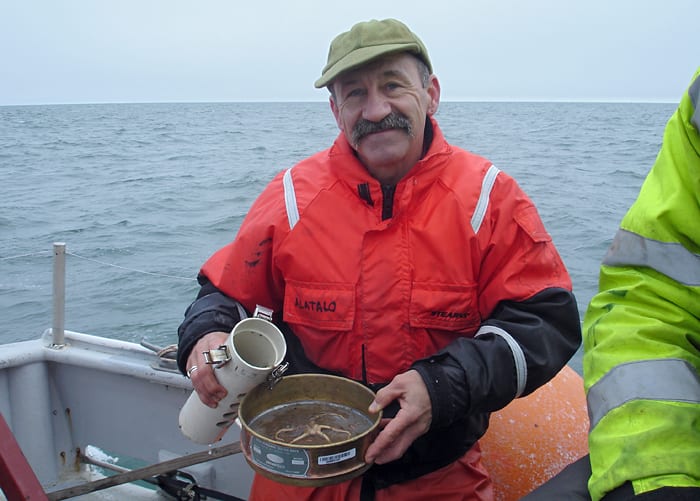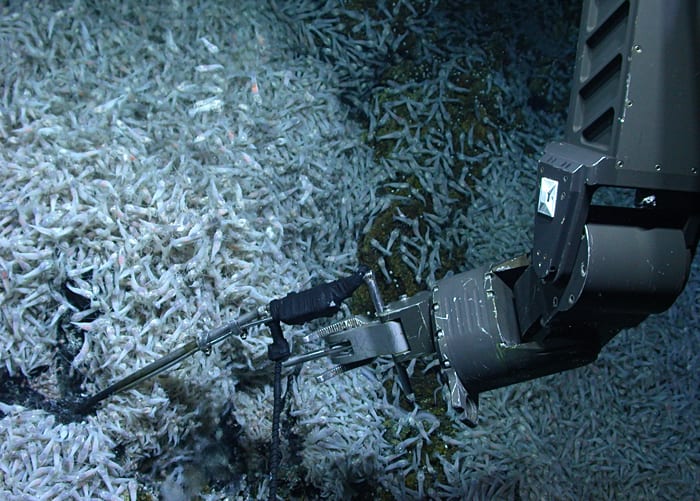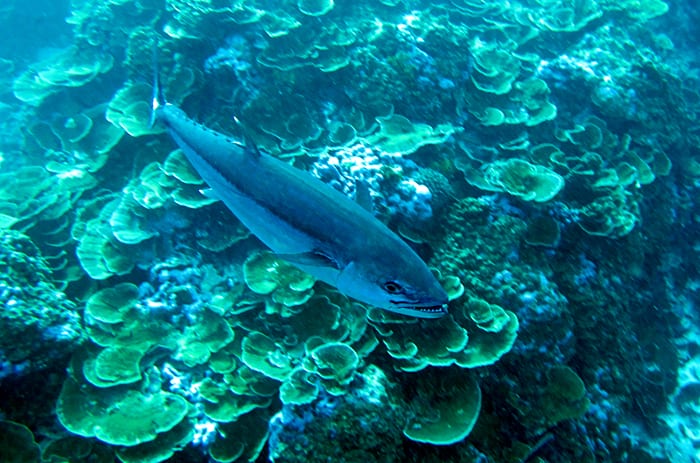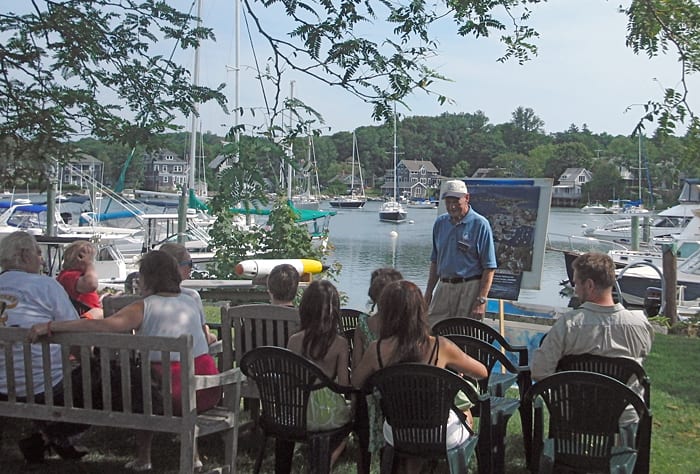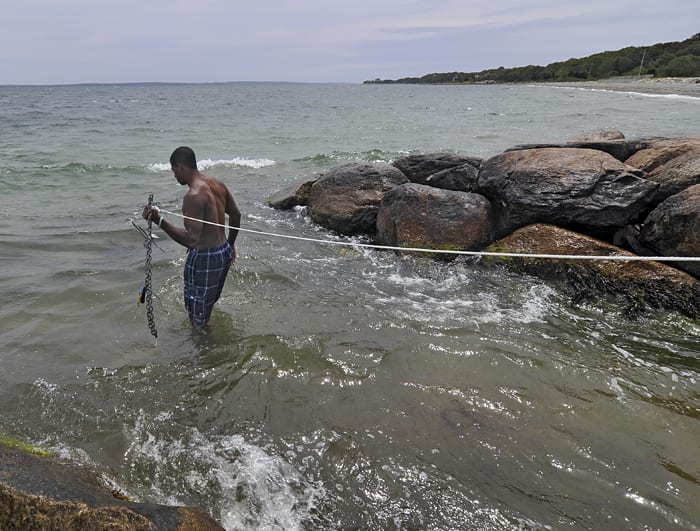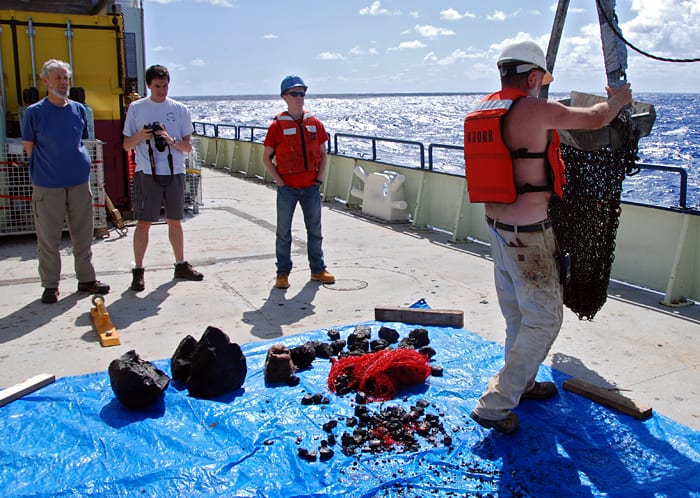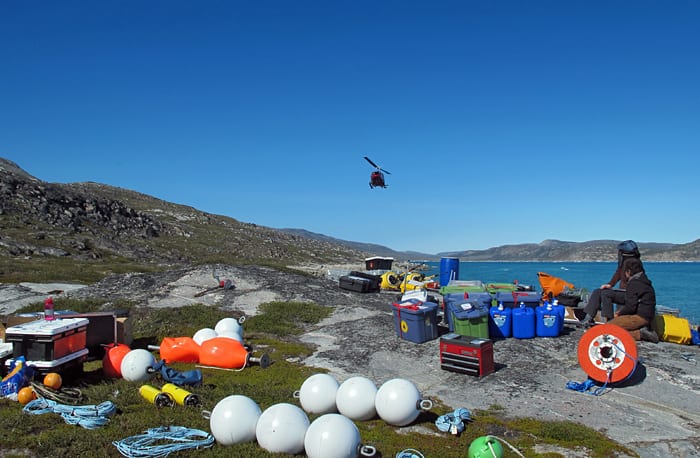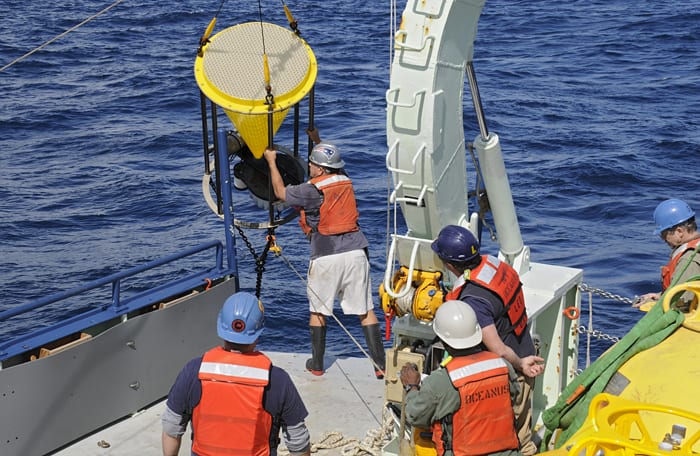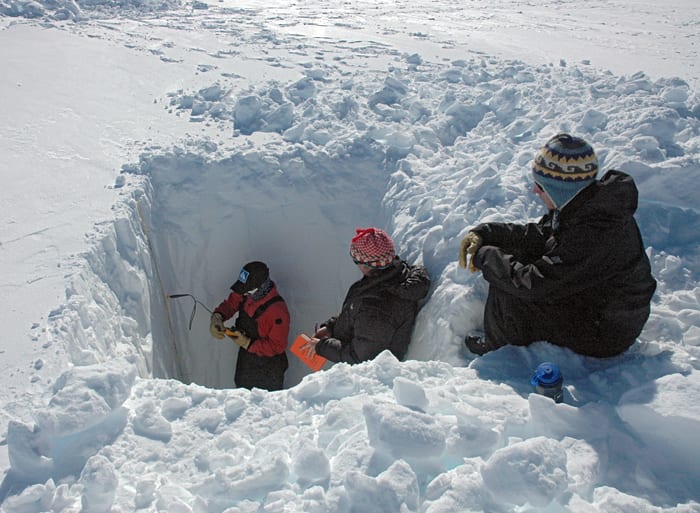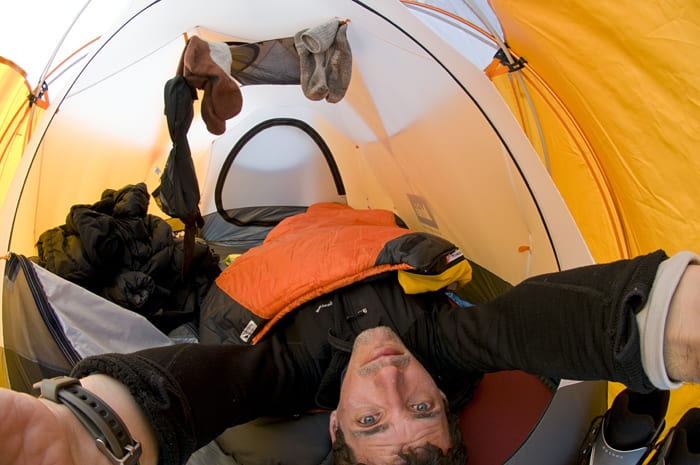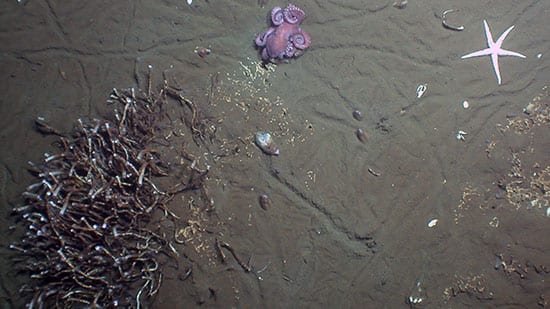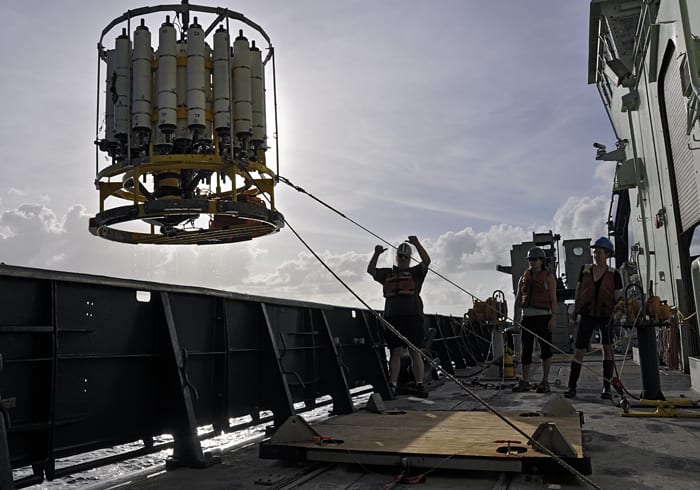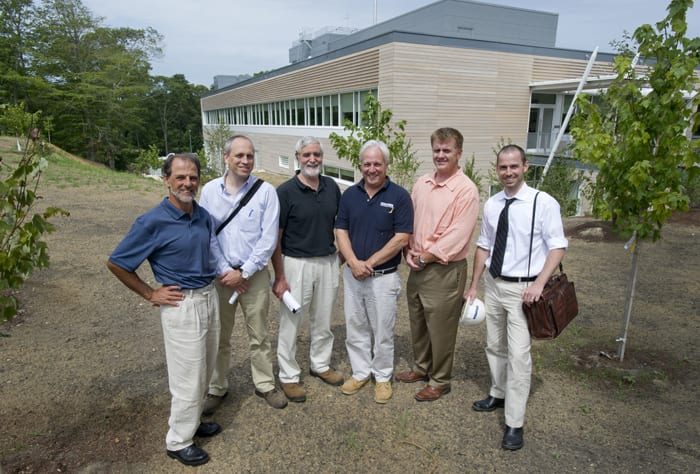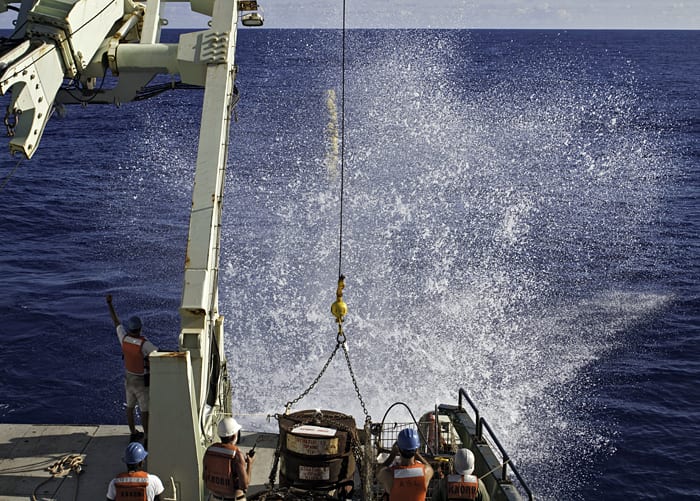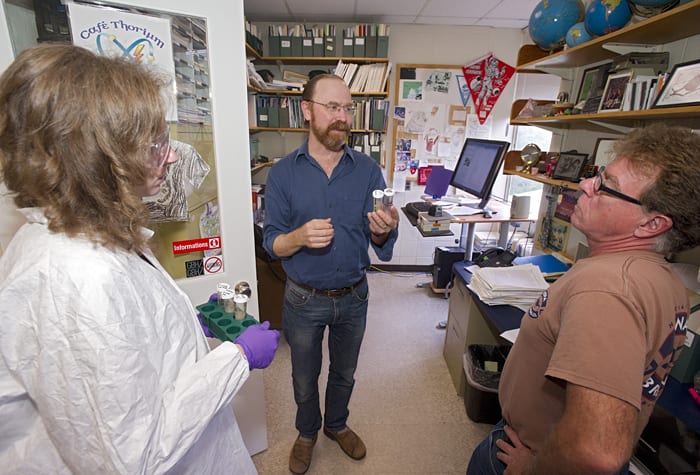Multimedia Items
Finding Genetic Keys
Biologists Mark Hahn and Diana Franks were recently funded by the Superfund Research Program of the National Institute of Environmental Health Sciences for five years to research the impact of…
Read MoreCore Effort
WHOI researchers Trevor Harrison (left) and Richard Sullivan push a Vibracore-driven sediment corer into the mud of Basin Bayou on the Florida panhandle, as guest graduate student Jess Rodysill (Brown…
Read MoreInto their Work
In July, MIT/WHOI Joint Program students joined MIT students and WHOI staff for a walked through a lava tube, a natural tunnel that forms under volcanoes, in Hawai’i Volcanoes National…
Read MoreSmoked Shrimp
Deep-sea shrimp thrive at one of the planet’s hottest black smoker hydrothermal vents, where the temperature of expelled fluids measured 400°C (about 750°F). The “smoke” consists of dark, fine-grained particles…
Read MoreYou’re It
MIT-WHOI Joint Program graduate student Julie van der Hoop assisted Rene Swift (above) from the Miller Lab at the University of St. Andrews in tagging humpback whales off Ilse Nue,…
Read MoreA Very Long-Term Study
WHOI shipboard technician Dave Sims (left) and assistants wrangle a CTD rosette on a rainy night aboard the R/V Atlantis. During the April 2012 cruise, researchers measured currents and studied…
Read MoreAUV Camping
Researchers Jeff Pietro and Amy Kukulya haul a REMUS 100 autonomous underwater vehicle (AUV) back to camp on the banks of a fjord in Greenland in July 2012. They were…
Read MoreA Star in Hand
In August, WHOI research associate Philip Alatalo helped net and preserve plankton (and at least one sea star) from the Chukchi Sea, off the coast of Alaska. The samples were collected at…
Read MoreShrimp Boil
In January 2012, an international research group aboard research vessel Atlantis completed an expedition to study the world’s deepest-known hydrothermal vents, at the Mid-Cayman Rise in the Caribbean. The group, led by WHOI marine…
Read MoreProtected Predator
A dogtooth tuna cruises above corals in the world’s second-largest marine reserve, the Phoenix Islands Protected Area (PIPA), which protects two interconnected ecosystems—the reefs around eight remote uninhabited coral atolls…
Read MoreThank You Volunteers
WHOI runs a volunteer program with some 85 active volunteers who help out in the Ocean Science Exhibit Center, Information Office, Data Library & Archives, science labs, and on walking…
Read MoreGetting Colder
William Melvin from Cornell University wades into the mouth of the Trunk River in Falmouth to set the anchor for a set of temperature sensors to measure the temperature gradient…
Read MoreMoonrise Over Greenland
The moon rises over the Denmark Strait and Greenland’s east coast during an October 2008 expedition onboard the research vessel Knorr. Led by WHOI scientist Robert Pickart, researchers spent a…
Read MoreGifts from the Deep
Researchers searched for signs of deep-sea eruptions in the rocks they collected during a spring cruise to hydrothermal vent sites along the Mid-Atlantic Ridge. Older rocks look dull, while freshly-erupted rocks…
Read MoreIncoming
In July, six WHOI scientists and engineers traveled to Southwest Greenland to do something never tried before with an underwater vehicle: take an up-close look at the underwater “plumbing system”…
Read MoreTrapping Falling Sediment
WHOI engineer Scott Worrilow guides a yellow sediment trap onto R/V Oceanus along with (clockwise from bottom left) WHOI engineer Brian Hogue, seaman Leo Fitz, and bosun Clindor Cacho, on…
Read MoreFarewell to Summer
No, this isn’t a preview of winter to come. This is a beautiful summer day—in Antarctica, where WHOI glaciologist Sarah Das, MIT/WHOI Joint Program graduate student Ali Criscitiello, and colleagues…
Read MoreTent for One
“Polar exploration is at once the cleanest and most isolated way of having a bad time which has been devised,” wrote Apsley Cherry-Garrard of his time with the 1910 Scott…
Read MoreDeep-sea Detectives
Only 85 To Go
WHOI shipboard technician Dave Sims signals to the winch operator as Courtney Schatzman from the Scripps Institution of Oceanography and Sarah Brody of Duke University stand by to recover a…
Read MoreNew Building to be Dedicated
Two years after groundbreaking, WHOI’s newest laboratory building will be officially dedicated September 20, 2012. The Laboratory for Ocean Sensors and Observing Systems (LOSOS) was funded through the National Institutes…
Read MoreMaking a Splash
A mooring anchor entered the North Atlantic in dramatic fashion last week from the stern of R/V Knorr. The mooring is part of the SPURS (Salinity Processes in the Upper…
Read MoreCold Bath
In July, a group of WHOI scientists and engineers led by Fiamma Straneo and Sarah Das deployed a REMUS 100 “ICEBOT” in Saqqarliup fjord in Southwest Greenland. Their work was part…
Read MoreHot Mud
WHOI marine chemist Ken Buesseler (center) holds two vials of ocean sediment collected from the Pacific seafloor 50 miles from the damaged Japanese nuclear power plant, Fukushima Dai-ichi. In June…
Read More
